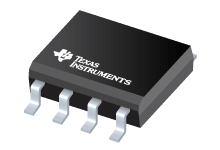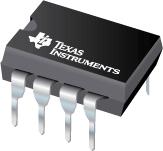
The Top 10 Operational Amplifiers on SnapEDA
The operational amplifier – or “op amp” for short – is a common building block in analog electronics. Whether you’re a professional electronics designer or just getting started, it is likely you’ve used an op amp in your designs.
Invented in 1941 by Karl D. Swartzel Jr. of Bell Labs, the op amp was originally built with vacuum tubes and was invented to perform mathematical operations in analog computers, hence how it earned its name. Now, op amps are used in all kinds of applications, for everything from signal conditioning, filtering, as well as for complex mathematical operations such as integration and differentiation. They form the basis of many modern analog electronic circuits because they are cost-effective, perform optimally and are readily available.
Op amps are commonly available as integrated circuits (ICs). They have input and output terminals capable of giving out a larger version of voltage signals that are being passed through them. They can be designed to act as a voltage amplifying device when used with active components such as transistors and passive components like resistors and capacitors to provide the desired response.
When signals pass through discrete elements in an analog circuit, they tend to decrease in amplitude—their voltage level decreases, but an op amp can help buffer and boost the amplitude of such signals, hence, delivering a signal that is useful at the output.
Op amps are very adaptable and versatile to many electronic circuits. They are used in audio and video applications, voltage regulators, precision circuits, analog-to-digital and digital-to-analog converters, and many other applications.
Choosing an op amp
When designing an application that requires an op amp, it is important to consider the design requirements to ensure that you’ve selected the right one.
Designers should consider gain, input impedance, output impedance, noise, and bandwidth as well as the following factors to consider when selecting an op amp IC:
1. Number of channels/inputs
An op amp can come in a number of channels anywhere between 1 and 8 with the most common op amps having 1, 2, or 4 channels.
2. Gain
The gain of an op amp represents how much greater in magnitude its output will be than its input, hence its amplification factor. This is usually defined as an open-loop gain or large signal voltage gain.
Infinite open-loop gain implies that a zero voltage at the input would turn the output fully on or off and although it seems impractical, it basically means that you can quickly switch your output from on to off just with a small change in input voltage. Typical real values are in the range of about 20,000 to 200,000.
The large signal voltage gain, usually denoted as AVD, is the ratio of the change in the output to the differential voltage change in the input, measured at DC—at low frequency—with the amplifier producing a large voltage output. It is usually quoted in preference to the open-loop voltage gain typically in V/mV. The difference is that it is measured with an output load and therefore takes into account loading effects.
3. Input impedance
This is the ratio of the input voltage to the input current. Ideally, this value is infinite but most op amps that are now in production have typical values in the order of millions of ohms. The input impedance of the op amp is desirably high enough to get all the voltage from an input to the target without loss. Typical input leakage current is from a few pico-milliamps.
4. Output impedance
This is the small-signal impedance between the output terminal and ground. It is usually in series with the load thereby increasing the output available for the load. The output impedance is assumed to be zero for an ideal amplifier, hence it should be small for real values.
5. Noise
Op amps have internally associated parasitic noise sources. They are usually measured at the output and referenced back to the input. The most significant of them is the Equivalent Input Noise Voltage, often specified by en. It is given as voltage, Vn, per root hertz at a specific frequency. It is desirable for this value to be as small as possible.
6. Bandwidth
The bandwidth of an op amp is the allowable range of frequency of the input signal which it can reproduce. An ideal op amp allows all frequency hence, its bandwidth is infinite and can amplify any frequency signal from DC to the highest AC frequencies.
This is not the case for practical op amps, which are limited to a certain range and do not perform well above a certain frequency.
The parameter Gain Bandwidth Product (GBP) is often used to describe the limit of the bandwidth of an op amp with respect to its gain. It is equal to the frequency where the gain of the amplifier becomes unity.
7. Nominal slew rate
The slew rate of an op amp is the rate of change in the output voltage caused by a step-change in the input. It is measured as a voltage change in a given time—typically V/µs or V/ms. Ideally, the slew rate of an op amp should be infinite thus allowing the output to be exactly an amplified copy of the input, without any distortion. In real-world applications, the higher the value of slew rate, the faster the output can change and the more easily it can reproduce high-frequency signals.
8. Maximum input offset voltage
This is the maximum differential voltage needed at the input to get a 0V output. Ideally, it is zero when both inputs to the op amp are zero. Hence, it should be small enough.
9. Maximum supply voltage
The allowable operating voltage range of an op amp should be considered, hence it’s maximum supply voltage should not be exceeded.
Now let’s dive into the top 10 most downloaded op amps on SnapEDA!*
The Top 10 operational amplifiers on SnapEDA
#10 LM741 from Texas Instruments

The LM741 is an old but classic general-purpose operational amplifier manufactured in 1981 that comes in an 8-pin PDIP, CDIP or TO-99 package with a maximum supply voltage of ±22V. It has a large signal voltage gain of 200V/mV and bandwidth of up to 1 MHz. Its input and output come with overload protection. This op amp also features no latch-up when the common-mode range is exceeded. It is a direct, plug-in replacement for other op amps like the 709C, LM201, MC1439, and 748 in most applications.
Average price across distributors at time of publish: $0.50 USD

Download Symbol, Footprint & 3D Model on SnapEDA.
#9 LM358-N from Texas Instruments

The LM358-N is a 2-channel industry standard operational amplifier available in 4 different 8-lead packages (DSBGA, TO-CAN, SOIC, PDIP) with a wide power supply voltage range from 3V(±1.5V) to 32V(±16V) and a gain-bandwidth of 1 MHz. It has a low input offset voltage of 2mV and large signal voltage gain of 100V/mV and its operating temperature range is from 0 to 70°C. This op amp is very popular due to its flexibility, availability and cost-effectiveness.
Average price across distributors at time of publish: $0.48 USD

Download Symbol, Footprint & 3D Model on SnapEDA.
#8 LM324 from Texas Instruments

The LM324 comes with four internally compensated op amps all in a 14-pin SOIC, PDIP or TSSOP package. It is a low power general-purpose operational amplifier that features a large signal voltage gain of about 100 V/mV, a wide gain-bandwidth of 1MHz and a input bias current of 250 nA max. It operates from a single power supply over a wide range of 3 V to 32 V and also supports dual supplies with a range of ±1.5 V to ±16 V. It is suitable for transducer amplifiers, DC gain blocks and conventional op amp applications.
Average price across distributors at time of publish: $0.21 USD

Download Symbol & Footprint on SnapEDA.
#7 RC4558 from Texas Instruments

The RC4558, electrically similar to the uA741, is a dual general-purpose operational amplifier. It comes in a 8-lead PDIP, SOIC, SOP, SSOP, TSSOP or VSSOP package and it has a low input bias current of 500 nA max and its temperature range is from 0 °C to 70 °C or -40 °C to 85 °C for the RC4558I. It is device is specified for operation and it has a typical gain-bandwidth product of 3 MHz. Its features make it suited for voltage-follower applications.
Average price across distributors at time of publish: $0.20 USD

Download Symbol & Footprint on SnapEDA.
#6 NE5532 from Texas Instruments

The NE5532 (5534 is pretty popular as well) is a 2-channel low-noise high-speed audio operational amplifier that comes in a 8-pin PDIP, SOIC or SOP package with a wide gain bandwidth of 10 MHz and a high DC voltage gain of 100V/mV, the CMRR of this device is 100 dB and it has a 9-V/ms slew rate.
Average price across distributors at time of publish: $0.29 USD

Download Symbol & Footprint on SnapEDA.
#5 TL072 from Texas Instruments

The TL072 is dual low-noise JFET-Input general-purpose op-amp and it comes in a 8-pin PDIP, SOIC, SOP or TSSOP package. It has a low input bias current of 200 pA with an operating free-air temperature range of 0 °C to 70 °C or -40 °C to 85 °C for the TL07xI. It operates from a single power supply with a range of -0.3 V to 36 V and also supports dual supplies with a range of ±18 V. It has a wide gain-bandwidth of 3 MHz. Suitable for high-fidelity and audio pre-amplifier applications.
Average price across distributors at time of publish: $0.40 USD

Download Symbol & Footprint on SnapEDA.
#4 OPA2134 from Texas Instruments

The OPA2134 is a low distortion, low noise op amp for audio applications that comes in an 8-Pin PDIP or SOIC package. It is specified for operation from 5 V to 36 V (±2.5 V to ±18 V) and it has a high open-loop gain of 120 dB (600 Ω). This FET-Input op-amp with an operating free-air temperature range of 40°C to 85°C has a wide gain-bandwidth of 8 MHz and a slew rate of 20 V/us. This amplifier is ideal to provide superior sound quality and speed for exceptional audio performance.
Average price across distributors at time of publish: $3.15 USD

Download Symbol & Footprint on SnapEDA.
#3 LM339 from Texas Instruments

The LM339 is the most commonly used quad differential comparator, it comes in an 14-pin PDIP, SOIC, SOP, SSOP or TSSOP package, it is characterized for operation from 0°C to 70°C and it has a typical input offset voltage and current of 2mV and 3nA respectively. It has a typical input bias current of 25nA. Suitable for industrial, oscillators, logic voltage translation applications and more.
Average price across distributors at time of publish: $0.17 USD

Download Symbol & Footprint on SnapEDA.
#2 OP07 from Analog Devices

The OP07 is a ultra-low offset voltage (75 µV max for OP07E) op amp that comes encased in a PDIP-8 or SOIC-8 package type with a low input bias current of ±4 nA and high open-loop gain of 200 V/mV. It typically has a gain-bandwidth of 0.6 MHz and it has an input voltage range of ±13 V. The OP07 is a direct replacement for 725, 108A, and OP05 amplifiers and it is suitable for high gain instrumentation applications.
Average price across distributors at time of publish: $0.94 USD

Download Symbol, Footprint & 3D model on SnapEDA.
#1 LMH6629 from Texas Instruments

The LMH6629 is a high-speed, ultra low-noise voltage feedback operational amplifier. This is a very special device because it can operate at large gains and still deliver exceptional speed and low noise. It comes in a 8-pin WSON or a SOT-23 package. It has a –3dB bandwidth of 900 MHz and 1600 V/µs slew rate. It is highly suitable for communication, test and measurement, optical and ultrasound systems.
Average price across distributors at time of publish: $4.16 USD

Download Symbol, Footprint & 3D model on SnapEDA.
There you have it, our Top 10 list.
If you would like to see another category of components, kindly let us know in the comment section.
Do you have a different set of op amps that make your list? We would also like to hear your thoughts on which factors you consider when selecting an op amp below.
* This data was collected via SnapEDA’s analytics by looking at downloads from its part model library (symbols, footprints, and 3D models). Millions of parts are evaluated on SnapEDA annually, however, if a part isn’t in our database it will not show up on this list. We’re continually increasing coverage and will update this list periodically!



Comments (7)
Steve
October 31, 2019 at 1:21 pm
Good article on op-amps in general.
There are two titles to the article as presented to me: “The Top 10” and “The Best”; these are not the same thing.
Many of these have been popular for decades. More interesting would be discussion on why these remain popular today on SnapEDA compared to the thousands of other options. So, what makes these popular on SnapEDA versus the other 99%?
I’m sure there are many others that are downloaded from SnapEDA. Perhaps list each family as a single item, with the derivatives discussed within the family ranking, making room in the Top 10 for more variety.
Elizabeth Bustamante
November 3, 2019 at 6:58 pm
Hello Steve! That’s great feedback and it’s something we could do for our next top 10.
Yes, that’s correct. There are many others that are downloaded from our website and I like the idea of listing each family as a single item, this can also be done in our next top 10 list!
Elizabeth Bustamante
November 3, 2019 at 7:06 pm
Hello Steve! Thanks for your great feedback and it’s something we could do for our next top 10.
Yes, that’s correct. There are many others that are downloaded from our website and I like the idea of listing each family as a single item, this can also be done in our next top 10 list!
steve
October 31, 2019 at 4:59 pm
LM741H goes back to 1968. The device listed is super expensive compared to modern better performing op-amps.
Elizabeth Bustamante
November 3, 2019 at 7:29 pm
Hi Steve!
Good catch! I think from the engineering side is super interesting to see what are the top downloaded op-amps but I agree with Steve’s comment above about the difference between “The best” and “The top 10” and it’s something that we will try to cover in our next blog post.
Martin Murillo
July 28, 2020 at 12:36 am
Well, information is kinda useful for students, for engineers need to be updated. There are thousands and thousands of newer OP AMPS with high slew rate and high current, super low noise and high gain over there. Thank you!
Elite RF
March 22, 2022 at 2:25 am
It was fascinating to read. Best of luck for the coming update.This article is truly fascinating.